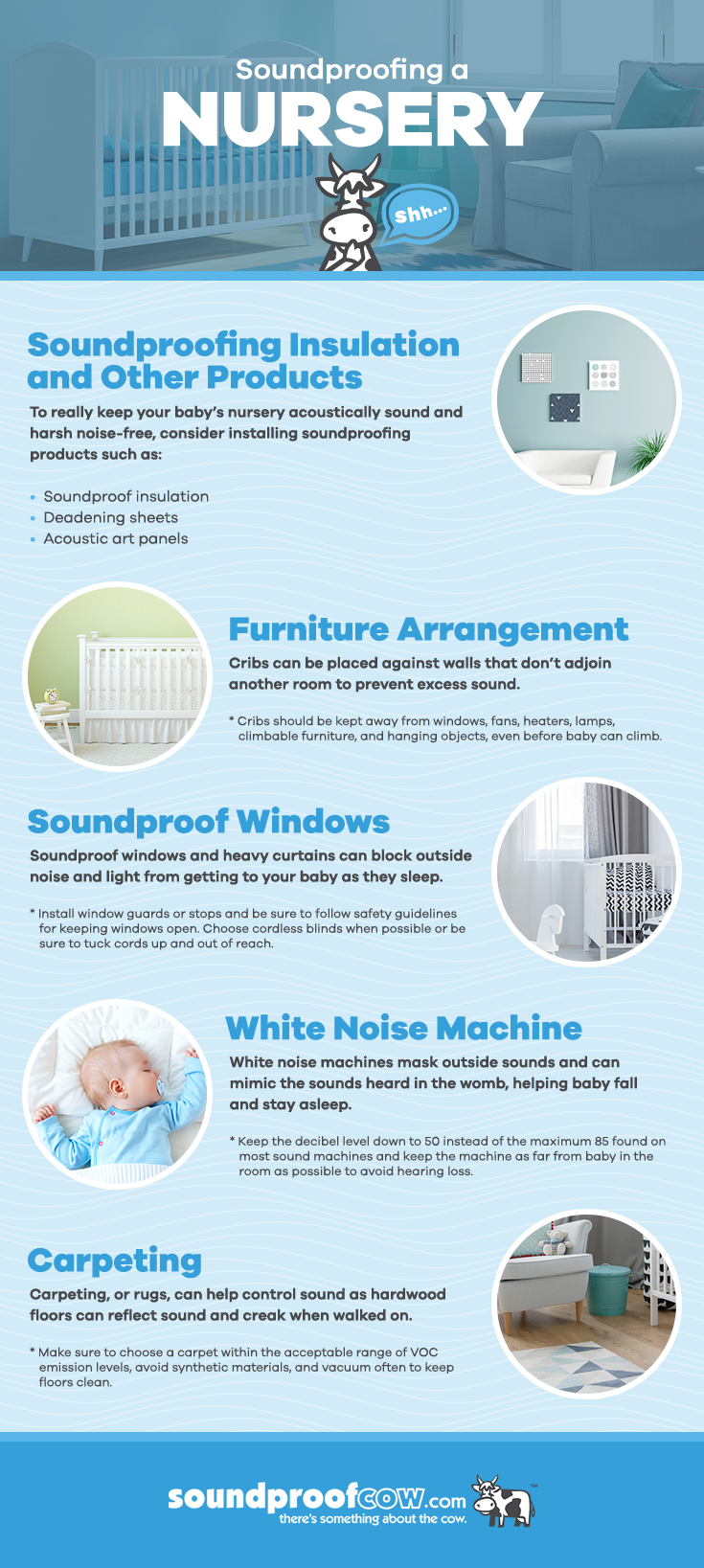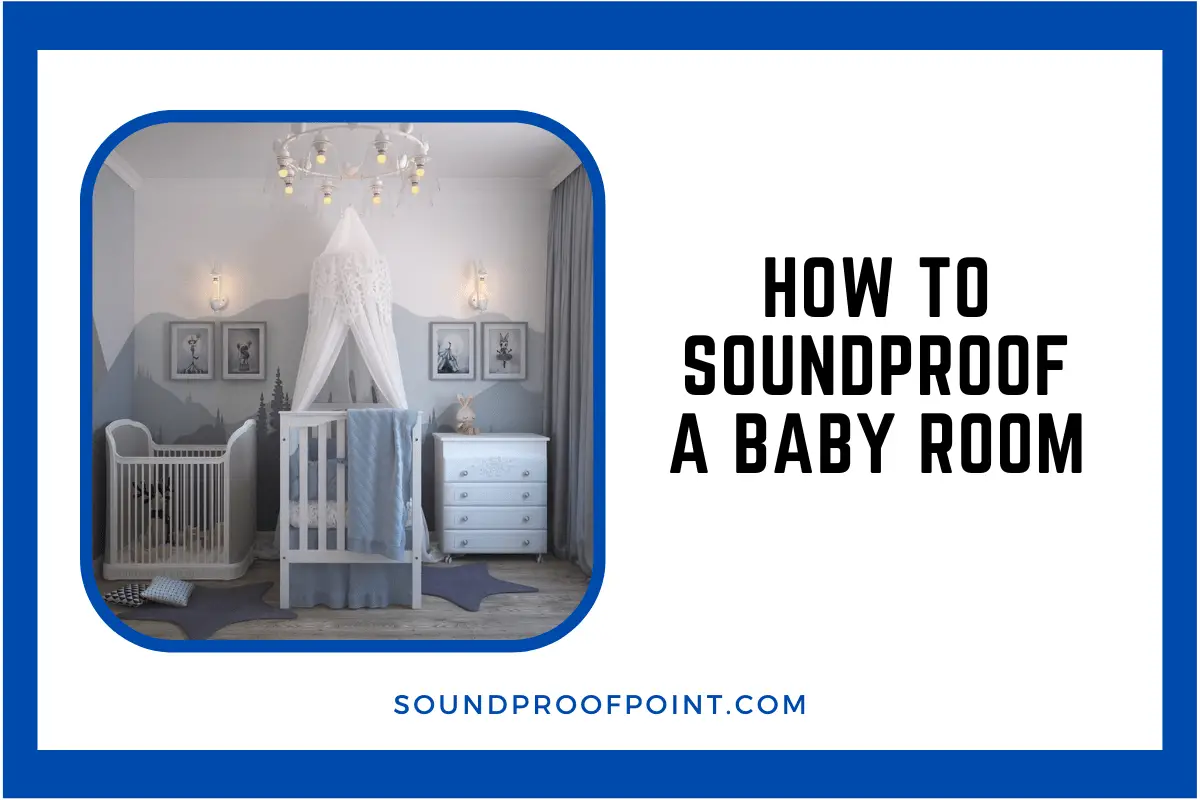As a new parent, ensuring a peaceful environment for your baby is of utmost importance. However, with the hustle and bustle of everyday life, external noises can easily disturb your little one’s precious sleep. That’s where soundproofing comes in. In this guide, we will explore effective strategies and techniques to create a serene and tranquil baby room that promotes uninterrupted rest. Whether you live in a noisy neighborhood or simply want to minimize the impact of household sounds, these tips will help you transform your baby’s space into a haven of calmness and tranquility.
Creating a soundproof baby room involves more than just blocking out external noises. It requires careful consideration of various factors such as room layout, materials used, and even the choice of furniture. Throughout this article, we will delve into each aspect, providing you with practical and easy-to-follow steps to ensure your baby’s room is a sanctuary of peace and quiet. So, let’s embark on this journey together and discover how to soundproof your baby’s room, ensuring a serene environment for your little one to rest, grow, and thrive.
How to Soundproof a Baby Room:
- Identify the sources of noise in the room.
- Seal all gaps and cracks in doors, windows, and walls.
- Use soundproof curtains or acoustic panels.
- Add a thick carpet or rugs to absorb sound.
- Place bookshelves or other furniture against noisy walls.
- Consider using a white noise machine or a fan to mask outside sounds.
- Use a soundproofing paint or wallpaper on the walls.
- Place a soundproofing door sweep at the bottom of the door.
- Use a soundproofing baby monitor to minimize noise disruptions.

Source: soundproofcow.com
Read Also:
How to Soundproof a Baby Room
Soundproofing a baby room is essential to creating a peaceful and quiet environment for your little one. Excessive noise can disrupt their sleep and overall well-being. In this article, we will provide you with step-by-step instructions on how to effectively soundproof a baby room, ensuring a sound sleep for your baby.
Step 1: Assess the Room
The first step in soundproofing a baby room is to assess the current noise levels. Identify the main sources of noise, such as external traffic, neighbors, or household appliances. Pay attention to areas where sound easily enters the room, such as windows, doors, and walls.
Once you have identified the noise sources, you can determine the appropriate soundproofing measures to implement.
Step 2: Seal Windows and Doors
Windows and doors are common entry points for noise. To soundproof them, start by sealing any gaps or cracks around the frames using weatherstripping or caulk. This will prevent sound from entering the room through these openings.
For windows, consider using soundproof curtains or installing secondary window panels. These curtains are specifically designed to absorb and reduce noise. Secondary window panels, such as acrylic or laminated glass, provide an extra barrier against sound transmission.
Step 3: Insulate the Walls
Insulating the walls is crucial for effective soundproofing. One option is to use soundproofing materials, such as mass-loaded vinyl or acoustic foam panels, which can be applied directly to the walls. These materials absorb and dampen sound vibrations, minimizing noise transmission.
Another method is to add an additional layer of drywall with soundproofing compounds in between. This helps to create a thicker barrier against noise. Ensure that all gaps and seams are properly sealed to maximize the effectiveness of the insulation.
Step 4: Carpet or Rug the Floor
Hard floors can amplify noise in a room. To reduce sound transmission through the floor, consider carpeting or adding rugs. These soft surfaces absorb sound and prevent it from bouncing off hard surfaces, thus reducing noise levels in the room.
Choose carpets or rugs with thick padding to further enhance sound absorption. Additionally, using furniture pads under cribs or other heavy objects can help to minimize noise caused by vibrations.
Step 5: Soundproof the Ceiling
If you live in an apartment or have noise coming from the floor above, soundproofing the ceiling can be beneficial. Install acoustic panels or ceiling tiles designed to absorb and block sound waves. These can be easily attached to the ceiling using adhesive or suspended with wires.
Consider adding additional insulation between the ceiling and the floor above to further reduce noise transmission.
Step 6: Use Sound Machines or White Noise
Sound machines or white noise devices can be effective in masking unwanted sounds. These devices produce soothing sounds, such as ocean waves or rainfall, that help to drown out background noise. Place the sound machine near the crib or in a strategic location to create a calming environment for your baby.
Ensure that the volume is set at a comfortable level, not too loud to cause discomfort or disturb your baby’s sleep.
Step 7: Furniture Placement
Strategically arranging furniture can also help in reducing noise levels. Place bookshelves or other bulky furniture against walls that face the main noise sources. These objects act as sound barriers and absorb sound waves, preventing them from reaching the baby’s sleeping area.
Consider placing a bookshelf or a soft upholstered chair near the crib as an additional sound buffer.
Step 8: Consider Soundproofing Decorative Elements
Some decorative elements in the room can inadvertently contribute to noise. For example, hard and reflective surfaces, such as mirrors or glass frames, can reflect and amplify sound. Consider replacing or covering these elements with sound-absorbing materials, like fabric or acoustic panels.
Additionally, using thick curtains or blinds can help in reducing noise transmission through windows.
Step 9: Test and Adjust
Once you have implemented the soundproofing measures, it is important to test their effectiveness. During different times of the day, listen for any remaining noise or disturbances in the room. Make adjustments as necessary, such as adding extra insulation or sealing any overlooked gaps.
Remember that complete soundproofing may not be achievable, but the goal is to significantly reduce noise levels to provide a peaceful environment for your baby.

Step 10: Maintain a Peaceful Environment
Finally, to ensure a consistently quiet room, maintain good habits that promote a peaceful environment. Avoid unnecessary noise in and around the baby room, such as loud conversations or loud music. Encourage others in your household to be mindful of noise levels, especially during your baby’s sleep time.
By following these steps and maintaining a peaceful environment, you can create a soundproof baby room that promotes better sleep and overall well-being for your little one.
You May Read Also:
Frequently Asked Questions
Here are some commonly asked questions about how to soundproof a baby room:
1. How can I soundproof a baby room?
To soundproof a baby room, insulate walls, ceiling, and floor with materials like acoustic foam or mass-loaded vinyl. Install soundproof curtains and seal gaps in windows and doors. Use white noise machines or fans for a soothing environment. While it may not eliminate all sounds, these methods create a quieter space for your baby.
2. Are there any specific materials that can help in soundproofing a baby room?
Materials like acoustic foam, mass-loaded vinyl, soundproof curtains, weatherstripping, soundproofing paint, and carpet can effectively soundproof a baby room by absorbing, blocking, or dampening sound. Carefully select materials suitable for the baby’s environment.
3. Can I soundproof a baby room on a budget?
Soundproofing a baby room on a budget is possible. Use weatherstripping, acoustic caulk, thick blankets as makeshift curtains, and add soft furnishings. Rearrange furniture, incorporate carpets, rugs, and toys for sound absorption. White noise machines or fans are cost-effective for masking unwanted sounds and creating a soothing environment.
4. Can soundproofing a baby room affect air circulation?
While soundproofing a baby room, ensure proper air circulation to maintain air quality and comfort for your baby. Use soundproofing materials that allow airflow and regularly clean and maintain ventilation systems. Prioritize your baby’s comfort and safety by balancing soundproofing and ventilation.
5. Will soundproofing a baby room completely eliminate all noise?
Soundproofing can significantly reduce noise in a baby room but may not eliminate all sounds, especially low-frequency ones. Effective methods like insulation, sealing gaps, and sound-absorbing materials create a quieter environment. Use white noise machines or fans to mask remaining sounds and ensure your baby’s comfort by adjusting soundproofing as needed.
Soundproofing a Nursery | Home Again with Bob Vila
In conclusion, soundproofing a baby’s room is crucial for creating a peaceful environment. Follow the tips outlined, including insulation, door seals, and using soundproof curtains or white noise machines. Investing in soundproofing promotes healthy sleep and overall well-being for your child. It’s a practical solution to eliminate disruptive noise and nurture their development. Soundproofing isn’t just about blocking noise but also about fostering relaxation and tranquility. By soundproofing your baby’s room, you’re investing in their future sleep habits and well-being.

